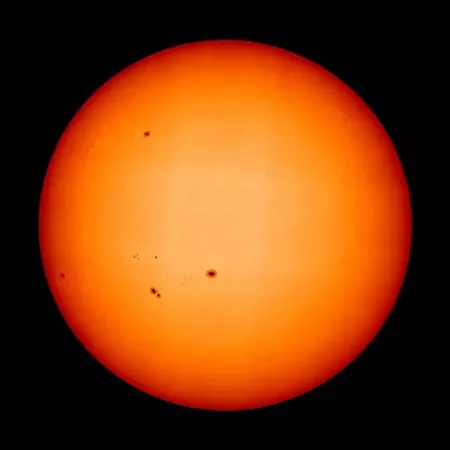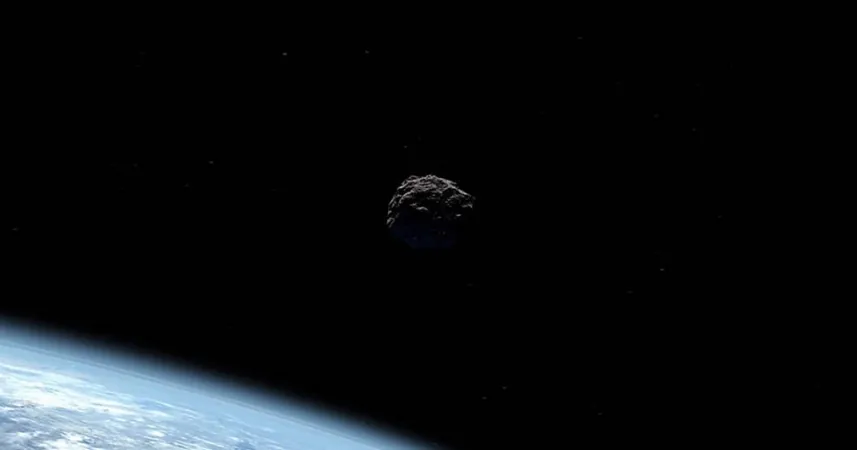
Unveiling the Sun: Breathtaking High-Resolution Images from the Solar Orbiter
2024-11-26
Author: Emily
Introduction
Prepare to be amazed! The Sun, the colossal star at the center of our Solar System, is finally opening up its secrets with an astonishingly high-resolution image captured by the European Space Agency's (ESA) Solar Orbiter. This groundbreaking spacecraft has been on a mission to approach the Sun and collect detailed imagery, and the results are nothing short of spectacular.
The Journey of the Solar Orbiter
Since its launch in February 2020, Solar Orbiter has journeyed toward the Sun, capturing a series of 25 images as it moves closer to its target. In March last year, the spacecraft reached a critical halfway point in its orbit, located about 74 million kilometers from our fiery star. Instead of snapping a single shot of the entire Sun—an impossible feat due to its proximity—it instead took 25 detailed images over several hours. These images were artfully stitched together to produce a breathtaking mosaic featuring a resolution of approximately 175 kilometers per pixel!
Understanding the Sun
The Sun may seem immense from our perspective on Earth, but in the grand scale of the universe, it is an average-sized star. Spanning approximately 1.39 million kilometers, it plays a vital role in nurturing life on our planet by emitting energy through nuclear fusion—a process that converts hydrogen into helium in its core, resulting in the warmth and light we receive. The Sun’s surface temperature peaks at around 5,500°C, and it contains 99% of the mass within our Solar System, exerting a gravitational pull that has successfully kept planets, asteroids, and comets in place for 4.6 billion years.
The Solar Orbiter's Instruments
The Solar Orbiter is not just any spacecraft; it is a keen observer armed with sophisticated instruments designed for solar exploration. Key among these instruments are the Extreme Ultraviolet Imager (EUI) and the Polarimetric and Helioseismic Imager (PHI). Together, they capture the intricate dynamics of the Sun, including its magnetic fields and solar winds.
A New Era in Solar Research
Previously, terrestrial observations like those from the Gregor Solar Telescope in Tenerife achieved high resolution but only covered small sections of the Sun. Now, thanks to the Solar Orbiter's innovative techniques, we can witness a vast and detailed view of our glowing neighbor. The stunning new mosaic reveals the Sun's photosphere teeming with granulation patterns and a myriad of sunspots, offering an unprecedented view of our nearest star’s intricate surface features.
Significance of the Findings
While the images are simply mesmerizing, they are also pivotal to our understanding of the Sun and its influence on the Solar System. Solar activity can affect satellite communications, power grids, and even global weather patterns. As scientists analyze these high-resolution images, we inch closer to deciphering how the Sun impacts life on Earth and the dynamics of space weather.
Conclusion
Get ready to explore the incomprehensible wonders of the Sun like never before—with the Solar Orbiter paving the way for a new era in solar research!









 Brasil (PT)
Brasil (PT)
 Canada (EN)
Canada (EN)
 Chile (ES)
Chile (ES)
 España (ES)
España (ES)
 France (FR)
France (FR)
 Hong Kong (EN)
Hong Kong (EN)
 Italia (IT)
Italia (IT)
 日本 (JA)
日本 (JA)
 Magyarország (HU)
Magyarország (HU)
 Norge (NO)
Norge (NO)
 Polska (PL)
Polska (PL)
 Schweiz (DE)
Schweiz (DE)
 Singapore (EN)
Singapore (EN)
 Sverige (SV)
Sverige (SV)
 Suomi (FI)
Suomi (FI)
 Türkiye (TR)
Türkiye (TR)